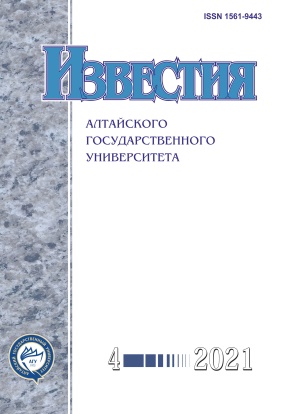The Laboratory Measuring and Computing System for Stabilometric Studies
УДК 534.7
Abstract
The article is devoted to the development of the digital measuring and computing system for conducting stabilometric studies. The proposed system is based on an electromechanical stability platform. The block diagram of the developed system is presented. The selection of electronic components for the system is analyzed. The developed system is based on the ATmega328 microcontroller on the Arduino Uno R3 board. The HX711 board is used as an analog-to-digital converter. Strain gauges of 50 kg are used to measure the patients’ pressure forces. The overall design, technological, technical, and operational characteristics of the developed stabilometric platform are presented in the paper. The physical model of the developed system is shown. The operating algorithm is described, and the block diagram for calculation of the main stabilometric indicators (the length of the stabilogram, the modules and directions of the velocities, angular velocities, and dynamic stabilization factors) is presented. There are several examples demonstrating test operations of the developed system. Trial measurements and calculations have shown that the designed system fully meets the technical requirements for stabilometry equipment. The developed measuring and computing system allows registration and calculation of the spatial and temporal characteristics of patients’ motions.
Downloads
Metrics
References
Гроховский С.С., Кубряк О.В. Метрологическое обеспечение стабилометрических исследований // Медицинская техника. 2014. № 4.
Мураенко А.А. Мониторинг состояния человека на основе анализа биодинамических данных, полученных со стабилометрической платформы // Математика и ее приложения: фундаментальные проблемы науки и техники : сб. трудов Всероссийской конф. Барнаул, 24–26 ноября, 2015. Барнаул, 2015.
Соммер У. Программирование микроконтроллерных плат Arduino/Freeduino. СПб., 2012.
Шишов О.В. Проектирование аналого-цифровых контрольно-управляющих микропроцессорных систем. Саранск, 2001.
Тензодатчик: принцип работы, устройство, типы, схемы подключения. URL: https://www.asutpp.ru/tenzodatchik.html (дата обращения: 24.05.2020).
Скворцов Д.В. Стабилометрическое исследование: краткое руководство. М., 2010.
Кручинин П.А. Механические модели в стабилометрии // Российский журнал биомеханики. 2014. Т. 18. № 2.
Lafond D., Duarte M., Prince F. Comparison of three methods to estimate the center of mass during balance assessment // Journal of Biomechanics. 2004. Vol. 37.
Усачев В.И., Артемов В.Г., Кононов А.Ф. Способ оценки функционального состояния человека (ИДС). Патент на изобретение № 2380035. М., 2010 (приоритет от 26.01.2009 г.).
Доценко В.И., Усачев В.И., Морозова С.В., Скедина М.А. Современные алгоритмы стабилометрической диагностики постуральных нарушений в клинической практике // Медицинский совет. 2017. № 8. DOI: 10.21518/2079-701X-2017-8-116-122.
Sliva S.S. Domestic computer stabilography: Engineering standards, functional capabilities, and fields of application // Biomedical Engineering. 2005. № 1. Vol. 39.
Stergiou N., Decker L.M. Human movement variability, nonlinear dynamics, and pathology: Is there a connection? // Human Movement Science. 2011. Vol. 30.
Copyright (c) 2021 Равиль Муратович Утемесов , Елена Анатольевна Шимко

This work is licensed under a Creative Commons Attribution 4.0 International License.
Izvestiya of Altai State University is a golden publisher, as we allow self-archiving, but most importantly we are fully transparent about your rights.
Authors may present and discuss their findings ahead of publication: at biological or scientific conferences, on preprint servers, in public databases, and in blogs, wikis, tweets, and other informal communication channels.
Izvestiya of Altai State University allows authors to deposit manuscripts (currently under review or those for intended submission to Izvestiya of Altai State University) in non-commercial, pre-print servers such as ArXiv.
Authors who publish with this journal agree to the following terms:
- Authors retain copyright and grant the journal right of first publication with the work simultaneously licensed under a Creative Commons Attribution License (CC BY 4.0) that allows others to share the work with an acknowledgement of the work's authorship and initial publication in this journal.
- Authors are able to enter into separate, additional contractual arrangements for the non-exclusive distribution of the journal's published version of the work (e.g., post it to an institutional repository or publish it in a book), with an acknowledgement of its initial publication in this journal.
- Authors are permitted and encouraged to post their work online (e.g., in institutional repositories or on their website) prior to and during the submission process, as it can lead to productive exchanges, as well as earlier and greater citation of published work (See The Effect of Open Access).








